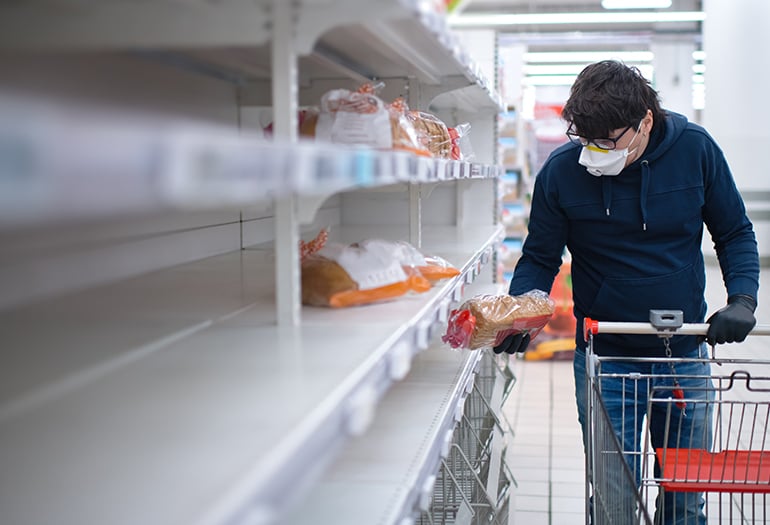

U.K. consumers are in the midst of a “perfect storm” that is resulting in long lines, shipping delays and empty shelves. Global inflation and ongoing supply chain problems combined with a country-wide shortage of lorry drivers is making it difficult to buy everyday items. So, shoppers are turning to the internet for the latest goods. Our data shows, however, many retailers are facing similar inventory challenges online.
We examined more than 36,000 products at 13 leading online retailers in the U.K. to find:
- The retailers having the most success at keeping items in stock.
- The categories most affected by inventory issues.
- The items consumers are searching for most frequently on Amazon.
- How the latest wave of panic buying compares to the early days of the pandemic.
Tesco is struggling the most to keep supplies in stock
Tesco had the highest out-of-stock (OOS) rate among the major U.K. grocers studied. Britain's largest grocer had an average OOS rate of 39% for the week ending September 25, 2021. Sainsbury’s fared slightly better with an average OOS rate of 19%, followed by Amazon at 10% OOS across all categories. Typically throughout the pandemic we’ve seen an OOS rate of 8%.
Ocado, Asda and Morrisons have been the most successful at keeping online shelves stocked, with OOS rates of 2%, 4% and 5%, respectively during the time frame studied.
Pet food and toys are scarce, but toilet rolls are plentiful
The most difficult items to find right now are pet food and toys. For the week ending September 25, 2021, we found both categories had the highest median out-of-stock rate. Pet food was at 26% and toys at 22% across available retailers, followed closely by electronics (18%) and fashion (16%). Parents have been able to catch a break when shopping for infants, with nappies being among the least scarce items. Both nappies and the dairy category had the lowest OOS rate at only 3% across available retailers.
Compared with the panic buying at the start of the pandemic, retailers are no longer having problems keeping toilet rolls and beauty products in stock. We found these to be the only two categories with a percentage decrease in OOS rates during the last three months (July to September) compared to the first three months of the pandemic (March 2020 to May 2020).
With the exception of toilet rolls and beauty products, the average out-of-stock rate for the past three months was higher than the peak three months at the start of the pandemic across all other categories we tracked.
Amazon is becoming the go-to destination for grocery supplies
As store shelves begin to empty, consumers are turning to the internet, particularly Amazon, to find essential items. Search data from Amazon U.K. has shown that consumers are searching for grocery staples more in the past month than at the start of the pandemic. Searches for key terms like bread, chicken and yoghurt have increased by more than 1,000% year-over-year.
There’s also a correlation between an increase in search frequency rank and out-of-stock rates across all retailers. We found search rank improvements (i.e., dropping numbers for keyword search frequency rank on the below chart, which signify searches actually increasing) led to increases in out-of-stock rates roughly a week later. Heading into Q4, brands should be closely tracking search rank increases as a leading indicator of potential supply issues.
The early shopper gets the goods
Things are bound to get worse before they get better.
Out-of-stock rates have trended upwards the past three months and remain high across nearly all categories and retailers. And they’re likely to continue increasing heading into the busy holiday shopping season. The lesson? Shop early to ensure you’re able to get the products you want at reasonable prices, and delivered to you in time for the holidays.


























